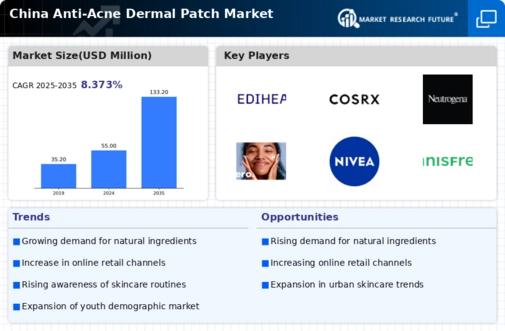The China Anti-Acne Dermal Patch Market is experiencing a dynamic competitive landscape characterized by rapid growth and innovation. This segment is driven by increasing awareness of skincare routines and personal grooming among consumers, leading to a high demand for effective solutions for acne management. The market is seeing a proliferation of various products that cater to diverse consumer preferences, with manufacturers constantly exploring new formulations and technologies. This competitiveness is intensified by the presence of both established brands and emerging players, each vying for market share.
They are navigating through challenges such as regulatory changes and the need for sustainable production, while leveraging digital marketing and e-commerce platforms to reach a broader audience. Mediheal has established a significant presence in the China Anti-Acne Dermal Patch Market, effectively capitalizing on the trend of integrating skincare with convenience. The brand is recognized for its innovative approach to acne treatment, focusing on high-quality formulations that promise rapid results. Mediheal’s strength lies in its extensive product range, which includes various types of dermal patches designed to cater to different skin types and concerns.
The company is adept at leveraging its strong brand equity and consumer trust, built through consistent quality and effective marketing strategies. By positioning itself as a leader in the skincare domain, Mediheal effectively differentiates itself from competitors, ensuring customer loyalty and a robust market presence.COSRX has carved out a notable niche within the China Anti-Acne Dermal Patch Market, renowned for its commitment to efficacy and customer-centric product development. With a focus on utilizing skin-friendly ingredients, COSRX's key products often include patches infused with hydrocolloid technology, designed to provide targeted acne treatment while promoting skin healing.
The brand enjoys a loyal customer base due to its transparent communication regarding product ingredients and benefits. Additionally, COSRX's strengths lie in its swift adaptation to consumer trends and preferences, which has led to successful product launches tailored for the Chinese market. The company has also engaged in strategic partnerships and collaborations to enhance its product offerings, solidifying its market position in China. Through continuous innovation and a strong emphasis on skincare education, COSRX is well-positioned to maintain its competitive edge in the anti-acne segment.

















